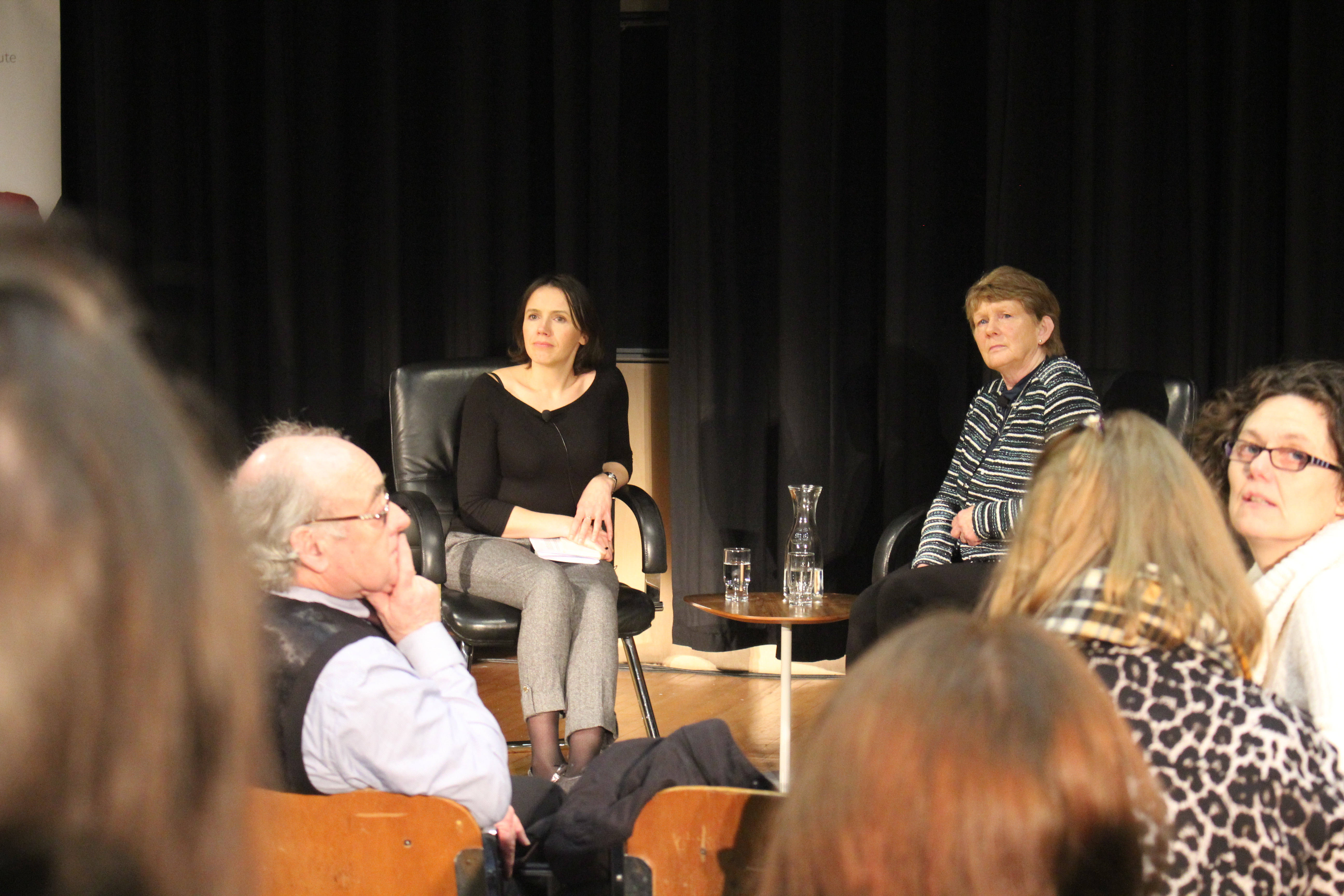In collaboration with the Trinity Long Room Hub Arts and Humanities Research Institute, the Edmund Burke theatre played host today to the esteemed historian Catherine Corless, who was key to unveiling the atrocities that took place at the Mother and Baby Home in Tuam. Presented with an honorary degree from Trinity, Corless engaged in a conversation with Professor Aoife McLysaght, a resident professor of genetics in Trinity. The interaction explored the detailed research and journey Corless took in discovering and making public the truth surrounding the babies that were buried by the Bon Secour sisters in Tuam.
Corless works as a family historian but started her life on a family farm, where she continues to work to this day. She described how the majority of her work took place in her own kitchen. She was interested in local history, and in particular in the Mother and Baby home that was situated in her area. She recalled the children that were living there when she was in school and remembered how strong the culture of separation was, even for herself and those who were in class with these children. Forced to leave early before the others, she describes the children walking in twos back to the Mother and Baby home. “Everyone remembers the pressure of the clogs on the pavement.” There was no doubt in her mind that from the beginning “segregation was deliberate.”
Intrigued by her own memories and the attitude towards the women and children affected at the time, Corless sought to dig deeper. Rumours surrounding a graveyard and the circumstances of those buried there sparked her interest. With many believing it held bodies of those from the old workhouse and others claiming it was the home of unborn babies, Corless decided to find out for herself. A grotto of particular interest to her was one that had been discovered when a housing estate had been built. Children from the area found a broken slab and removed it, only to find multiple skulls inside. After the local priest was called to say a few prayers and the county council came in, a grotto was put in its place and the subject was put to bed. This wasn’t enough for Corless: “I wanted more, I wanted an investigation.”
Using the only source she could find at the time in her local library, a thesis on the abuse of women and children in the mother and baby home in Tuam, Corless was determined to seek out the truth behind the remains found at that grotto. What appears to be a sudden revelation in Irish History was actually the results of a long and tenuous study by Corless. Met with constant rejection and ignorance from the Catholic Church, the historian struggled to find material and documentation on the matter. With the help of one other woman in Tuam, she tracked down and purchased hundreds of birth and death certificates, all originating from babies born in the Tuam home. The final number came to 796 babies. Their bodies were wrapped in shrouds and placed one on top of the other in a Victorian style red brick sewage system or septic tank. She referenced the recordings of Julia Carter, a gardener for the home during the time in which it was run. They detailed the day to day lives of the women and children living there and the horrors that would ensue for the victims. From there, Corless wrote an essay on the topic in 2014, published by the Journal of the Old Tuam Society. Following this, The Daily Mail printed her story on the front page. The New York Times and The Washington Post were among many other publications that picked up the story. Suddenly, the world was awake to its own torrid history. Corless’ reaches had gone far beyond our little island.
Corless today has many things on her mind going into the future with this indisputable knowledge. Working with Katherine Zappone, Minister for Children and Youth Affairs, her one desire is that the exhumation of the Tuam babies carries on as predicted in 2019. She believes the Tuam babies were hidden and that they were denied the right to a proper burial. The creation of her own work came from the desire for justice: “I felt I had to give them a voice.” With this, Corless has requested the Bon Secour order fund the exhuming, taking a responsibility that is long overdue. She also wants to see the establishment of counselling and support for survivors of tragedies like the one that took place in the Tuam Mother and Baby home.
Once the conversation had ceased, the floor was open for questions. Most were personal testimonies of individuals linked to those directly affected by the Tuam home or others like it. The theme seemed to centre on the demand for full disclosure of the information and documentation of people who lived in the homes and those who were adopted by other families as a result. The event ended with applause and a standing ovation for the guest speaker, one which everyone present could agree was more than deserving for the life and work of Catherine Corless.






